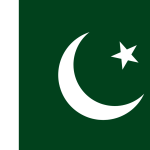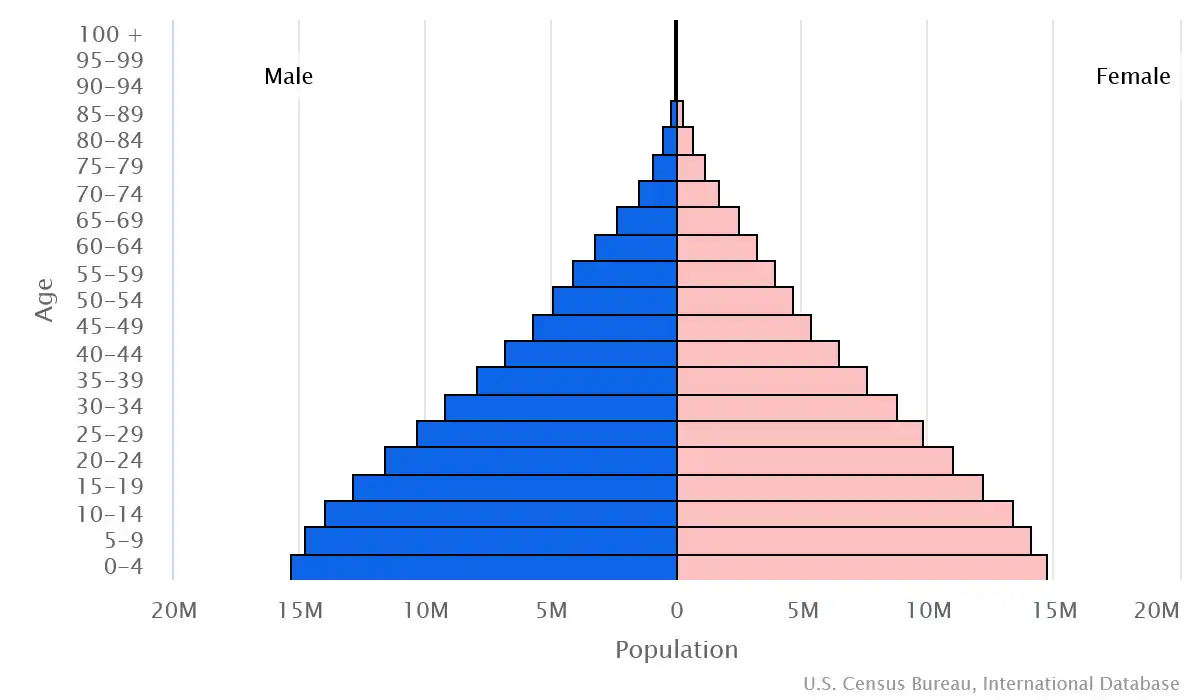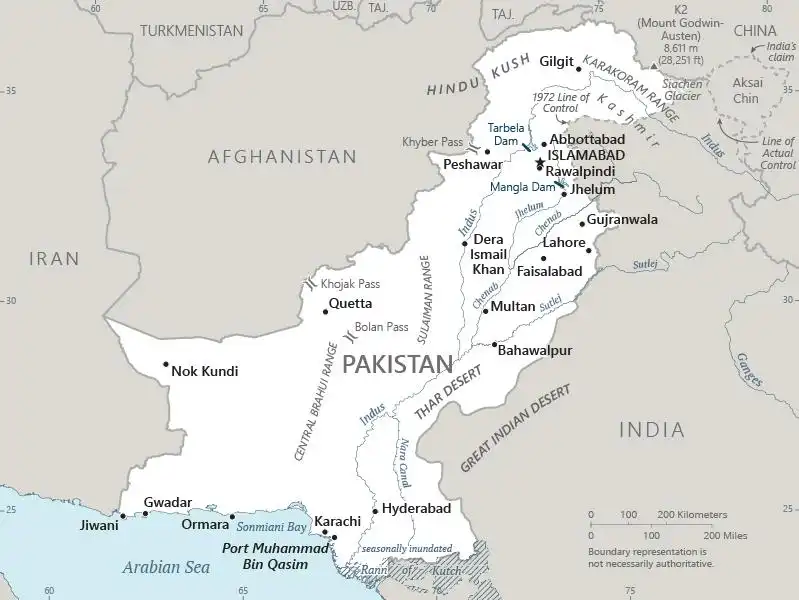
Pakistan
Country Data Dashboard

| Government type: | federal parliamentary republic |
| Capital: | Islamabad |
| Languages: | Punjabi 38.8%, Pashto (alternate name, Pashtu) 18.2%, Sindhi 14.6%, Saraiki (a Punjabi variant) 12.2%, Urdu 7.1%, Balochi 3%, Hindko 2.4%, Brahui 1.2%, other 2.4% |
People & Society
Ethnicity (Pathan)
Religion (2020 est.)
Age structure

Economy
Economic overview
lower middle-income South Asian economy; extremely high debt; endemic corruption; regional disputes with India and Afghanistan hinder investment; falling inflation, IMF relief programs, and strong agricultural output slowly contributing to economic recovery
Real GDP (purchasing power parity) in Billion $
Real GDP per capita in $
Exports & Imports in billion $
Top 5 Import Partner in 2022 (53%)
Top 5 Import Commodities in 2022
- refined petroleum ⛽
- crude petroleum 🛢️
- natural gas 💨
- palm oil 🛢️
- cotton 🧵
Top 5 Export Partner in 2022 (53%)
Top 5 Export Commodities in 2022
- garments 👕
- fabric 👕🧶
- cotton fabric 🧵
- rice 🍚
- refined petroleum ⛽
Geography
Map

Area
Natural resources
- arable land 🌱
- extensive natural gas reserves 💨
- limited petroleum 🛢️
- poor quality coal ⚫
- iron ore ⛓️
- copper 🟧🪙
- salt 🧂
- limestone 🪨
Climate
mostly hot, dry desert; temperate in northwest; arctic in north
Historical Background Information
The Indus Valley civilization, one of the oldest in the world and dating back at least 5,000 years, spread over much of modern-day Pakistan. During the second millennium B.C., remnants of this culture fused with the migrating Indo-Aryan peoples. The area underwent successive invasions in subsequent centuries from the Persians, Greeks, Scythians, Arabs (who brought Islam), Afghans, and Turks. The Mughal Empire flourished in the 16th and 17th centuries; the British came to dominate the region in the 18th century. The partition in 1947 of British India into the Muslim state of Pakistan (with West and East sections) and largely Hindu India created lasting tension between the two countries. They have fought two wars and a limited conflict -- in 1947-48, 1965, and 1999 respectively -- over the Kashmir territory, a dispute that continues to this day. A third war in 1971 -- in which India assisted an indigenous movement reacting to Bengali marginalization in Pakistani politics -- resulted in East Pakistan becoming the separate nation of Bangladesh.
In response to Indian nuclear weapons testing, Pakistan conducted its own tests in 1998. Pakistan has been engaged in a decades-long armed conflict with militant groups, including the Tehreek-e-Taliban Pakistan (TTP) and other militant networks that target government institutions and civilians.
